-
 Bitcoin
Bitcoin $108,165.4587
0.78% -
 Ethereum
Ethereum $2,456.3517
1.15% -
 Tether USDt
Tether USDt $1.0003
0.00% -
 XRP
XRP $2.1934
0.05% -
 BNB
BNB $650.0935
0.52% -
 Solana
Solana $151.3905
2.69% -
 USDC
USDC $0.9998
0.00% -
 TRON
TRON $0.2751
-0.32% -
 Dogecoin
Dogecoin $0.1640
0.87% -
 Cardano
Cardano $0.5631
0.57% -
 Hyperliquid
Hyperliquid $38.7115
4.69% -
 Bitcoin Cash
Bitcoin Cash $493.1868
-0.39% -
 Sui
Sui $2.8217
3.61% -
 Chainlink
Chainlink $13.3994
2.08% -
 UNUS SED LEO
UNUS SED LEO $9.1632
0.94% -
 Avalanche
Avalanche $18.0318
1.97% -
 Stellar
Stellar $0.2388
0.35% -
 Toncoin
Toncoin $2.8763
1.41% -
 Shiba Inu
Shiba Inu $0.0...01160
1.59% -
 Litecoin
Litecoin $86.6393
1.29% -
 Hedera
Hedera $0.1485
0.16% -
 Monero
Monero $315.7948
1.56% -
 Polkadot
Polkadot $3.4240
1.88% -
 Bitget Token
Bitget Token $4.6314
-0.44% -
 Dai
Dai $0.9998
-0.01% -
 Ethena USDe
Ethena USDe $1.0002
-0.01% -
 Uniswap
Uniswap $7.2110
2.59% -
 Aave
Aave $270.6087
6.07% -
 Pi
Pi $0.5350
0.52% -
 Pepe
Pepe $0.0...09545
1.26%
What is token economics? How important is it to the long-term development of a project?
Token economics is vital for assessing a crypto project's viability, as it governs token creation, distribution, and management within a blockchain ecosystem.
May 08, 2025 at 06:36 pm
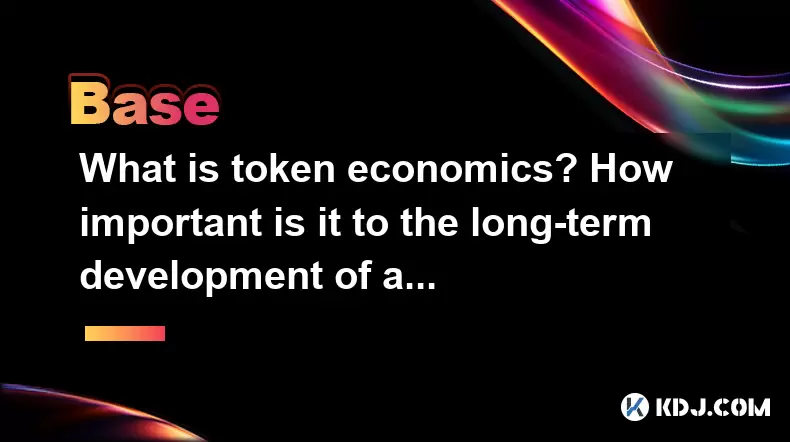
Token economics, often referred to as tokenomics, is a crucial aspect of any cryptocurrency project. It encompasses the study and design of the economic systems that govern the creation, distribution, and management of tokens within a blockchain ecosystem. Understanding token economics is essential for assessing the viability and sustainability of a cryptocurrency project. This article delves into the intricacies of token economics and explores its importance for the long-term development of a project.
What is Token Economics?
Token economics is the framework that defines how tokens function within a blockchain network. It includes the token's supply, distribution mechanisms, and the incentives that drive user behavior. Token economics is not just about the technical aspects of a token but also about creating a balanced ecosystem where the token has real utility and value. For instance, a well-designed token economy can encourage participation, ensure security, and promote the overall growth of the network.
Key Components of Token Economics
Several elements make up the core of token economics. These include token supply, token distribution, token utility, and the economic incentives that drive the ecosystem. Let's break down each of these components:
Token Supply: This refers to the total number of tokens that will ever exist within the system. A fixed supply, like that of Bitcoin, can create scarcity and potentially drive up value, whereas an inflationary supply can be used to incentivize certain behaviors within the network.
Token Distribution: How tokens are initially distributed can greatly impact the project's success. Methods such as Initial Coin Offerings (ICOs), airdrops, and staking rewards are common ways to distribute tokens. A fair and transparent distribution method can help build trust and encourage widespread adoption.
Token Utility: The utility of a token refers to its function within the ecosystem. Tokens can be used for governance, as a means of payment, or to access certain services within the network. A token with clear utility is more likely to be valued by users.
Economic Incentives: These are the mechanisms that encourage users to participate in the network. Staking rewards, transaction fees, and burning mechanisms are examples of economic incentives. Properly designed incentives can align the interests of users with the long-term goals of the project.
The Importance of Token Economics in Long-term Development
Token economics plays a pivotal role in the long-term development of a cryptocurrency project. A well-thought-out token economy can ensure the sustainability and growth of the network. Here are some ways in which token economics impacts long-term development:
Ensuring Network Security: By incentivizing users to participate in network activities such as staking or mining, token economics can help maintain the security of the blockchain. A secure network is more likely to attract users and investors, contributing to its long-term viability.
Encouraging Adoption: A token with clear utility and value can drive adoption. If users see the token as essential for accessing services or participating in governance, they are more likely to hold and use it. This increased demand can contribute to the project's growth and stability.
Balancing Supply and Demand: Token economics can help manage the supply of tokens in circulation. Mechanisms such as token burning or minting can be used to control inflation and maintain the token's value. A balanced supply and demand dynamic is crucial for the long-term health of the project.
Aligning Incentives: Proper economic incentives can align the interests of different stakeholders within the ecosystem. For example, rewarding users for contributing to the network can encourage positive behaviors that benefit the project as a whole. This alignment of incentives can lead to a more robust and resilient ecosystem.
Case Studies: Successful Token Economics
Several cryptocurrency projects have demonstrated the importance of token economics in their long-term development. Let's look at a couple of examples:
Bitcoin: Bitcoin's token economics are based on a fixed supply of 21 million coins. This scarcity model has contributed to Bitcoin's value as a store of value. Additionally, the mining rewards and transaction fees incentivize miners to secure the network, ensuring its long-term viability.
Ethereum: Ethereum's transition to Ethereum 2.0 introduced a new token economic model with staking rewards. This shift from proof-of-work to proof-of-stake has been designed to improve the network's scalability and security. The staking mechanism also encourages long-term holding of Ether, which can help stabilize its value.
Challenges in Designing Token Economics
Designing effective token economics is not without its challenges. Project teams must carefully consider various factors to create a balanced and sustainable ecosystem. Some common challenges include:
Balancing Incentives: It can be difficult to design incentives that benefit all stakeholders without creating unintended consequences. For example, overly generous rewards might lead to inflation, while insufficient rewards might discourage participation.
Regulatory Compliance: Token economics must comply with various regulatory frameworks. Ensuring that the token distribution and utility mechanisms meet legal requirements can be complex and time-consuming.
Adaptability: The cryptocurrency space is constantly evolving, and token economics must be adaptable to changing market conditions. A rigid token economy might struggle to respond to new challenges and opportunities.
User Education: Educating users about the token economy and its benefits is crucial for adoption. Complex economic models can be difficult for users to understand, potentially hindering the project's growth.
Best Practices for Token Economics
To maximize the benefits of token economics for long-term development, project teams should follow several best practices:
Clear Utility: Ensure that the token has a clear and compelling utility within the ecosystem. Users are more likely to value and use a token that serves a specific purpose.
Fair Distribution: Implement a fair and transparent token distribution method. This can help build trust and encourage widespread participation in the network.
Sustainable Incentives: Design economic incentives that are sustainable over the long term. Avoid mechanisms that might lead to inflation or other negative outcomes.
Community Engagement: Engage with the community to gather feedback and refine the token economy. A collaborative approach can help identify potential issues and improve the overall design.
Continuous Monitoring: Regularly monitor the token economy and make adjustments as needed. The ability to adapt to changing conditions is crucial for long-term success.
Frequently Asked Questions
Q: How can token economics influence the price of a cryptocurrency?
A: Token economics can influence the price of a cryptocurrency through various mechanisms. For instance, a fixed supply can create scarcity, potentially driving up the price. Additionally, economic incentives such as staking rewards can encourage long-term holding, which can reduce the available supply and increase demand. Conversely, an inflationary token supply might lead to a decrease in value if not managed properly.
Q: Can token economics be changed after a project launches?
A: Yes, token economics can be changed after a project launches, but it requires careful planning and community consensus. Changes to the token economy can be implemented through network upgrades or governance proposals. However, such changes must be communicated clearly to avoid confusion and maintain trust within the community.
Q: How do regulatory considerations affect token economics?
A: Regulatory considerations can significantly impact token economics. Different jurisdictions have varying rules regarding token issuance, distribution, and utility. Project teams must ensure that their token economy complies with these regulations to avoid legal issues. This might involve adjusting the token supply, distribution methods, or the token's utility to meet regulatory requirements.
Q: What role does community feedback play in shaping token economics?
A: Community feedback plays a crucial role in shaping token economics. Engaging with the community can help identify potential issues and gather insights on how to improve the token economy. This collaborative approach can lead to a more robust and sustainable economic model that aligns with the needs and expectations of users.
Disclaimer:info@kdj.com
The information provided is not trading advice. kdj.com does not assume any responsibility for any investments made based on the information provided in this article. Cryptocurrencies are highly volatile and it is highly recommended that you invest with caution after thorough research!
If you believe that the content used on this website infringes your copyright, please contact us immediately (info@kdj.com) and we will delete it promptly.
- South Korea, Crypto, and Global Markets: Riding the Digital Wave to New Highs
- 2025-06-29 20:50:12
- Bitcoin Eyes $108K: Will Trump's Nod Push BTC to a New All-Time High?
- 2025-06-29 21:10:12
- Pengu Pumps: Bullish Flags and Whale Wallets Fuel the Fire!
- 2025-06-29 21:10:12
- XRP to $20,000? Crypto Developers Eyeing Ripple's Potential
- 2025-06-29 21:15:12
- Sui's DeFi Lending Landscape: Suilend Leading the Charge
- 2025-06-29 21:30:12
- Bitcoin Whale Goes Long: Will the Bitcoin Price Follow?
- 2025-06-29 21:30:12
Related knowledge
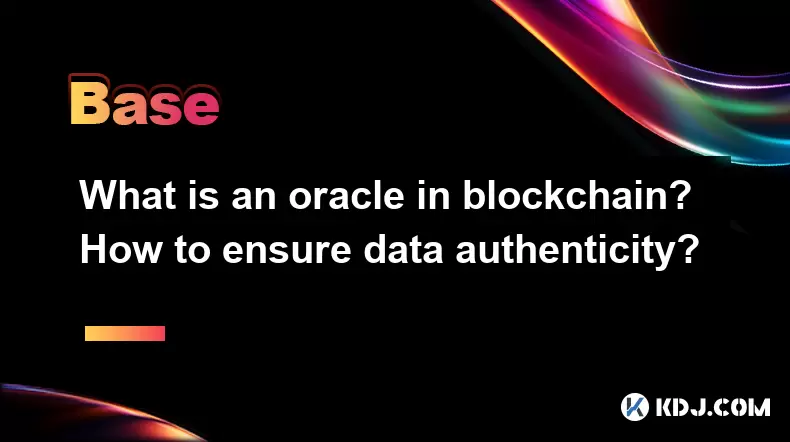
What is an oracle in blockchain? How to ensure data authenticity?
Jun 19,2025 at 08:49pm
Understanding the Role of an Oracle in BlockchainIn the context of blockchain technology, an oracle serves as a bridge between the blockchain and external data sources. While blockchains are inherently secure and decentralized, they cannot access real-world information on their own. Oracles enable smart contracts to interact with off-chain data such as ...
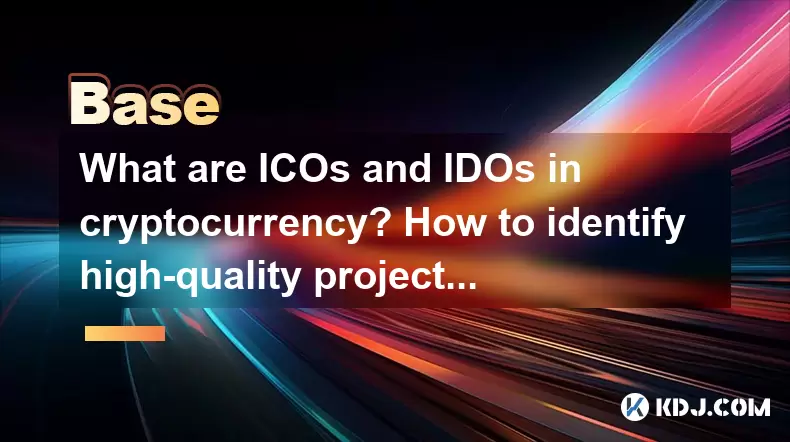
What are ICOs and IDOs in cryptocurrency? How to identify high-quality projects?
Jun 22,2025 at 11:49am
Understanding ICOs in CryptocurrencyInitial Coin Offerings (ICOs) are fundraising mechanisms used by cryptocurrency startups to raise capital for their projects. In an ICO, a company creates and sells its own tokens to investors in exchange for established cryptocurrencies like Bitcoin or Ethereum. The process typically involves the release of a whitepa...
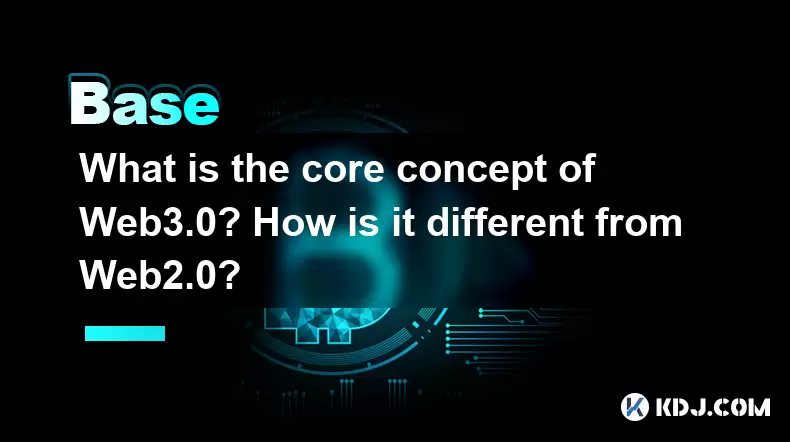
What is the core concept of Web3.0? How is it different from Web2.0?
Jun 21,2025 at 05:56pm
Decentralization as the Foundation of Web3.0The core concept of Web3.0 revolves around decentralization, which fundamentally challenges the centralized architecture of Web2.0. In Web3.0, control and ownership are distributed across a network rather than being held by a central authority or corporation. This is achieved primarily through blockchain techn...
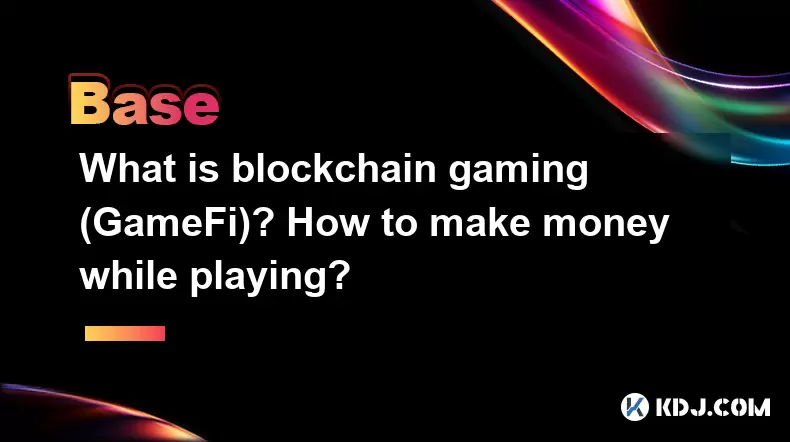
What is blockchain gaming (GameFi)? How to make money while playing?
Jun 20,2025 at 07:56am
Understanding Blockchain Gaming (GameFi)Blockchain gaming, often referred to as GameFi, is a fusion of blockchain technology and video games. It enables players to own in-game assets through non-fungible tokens (NFTs) and earn rewards via cryptocurrencies or token-based systems. Unlike traditional games where items are controlled by centralized develope...
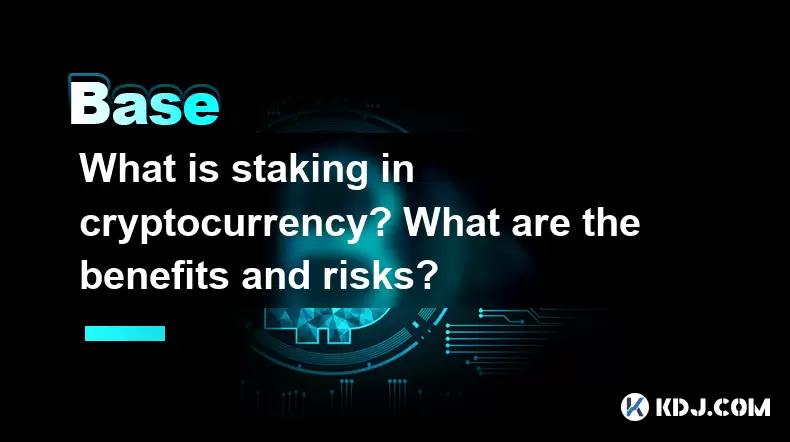
What is staking in cryptocurrency? What are the benefits and risks?
Jun 22,2025 at 10:01am
Understanding the Concept of Staking in CryptocurrencyStaking in cryptocurrency refers to the process of actively participating in transaction validation on a blockchain network that uses a Proof-of-Stake (PoS) consensus mechanism. Instead of miners competing to solve complex mathematical puzzles as in Proof-of-Work systems like Bitcoin, PoS blockchains...
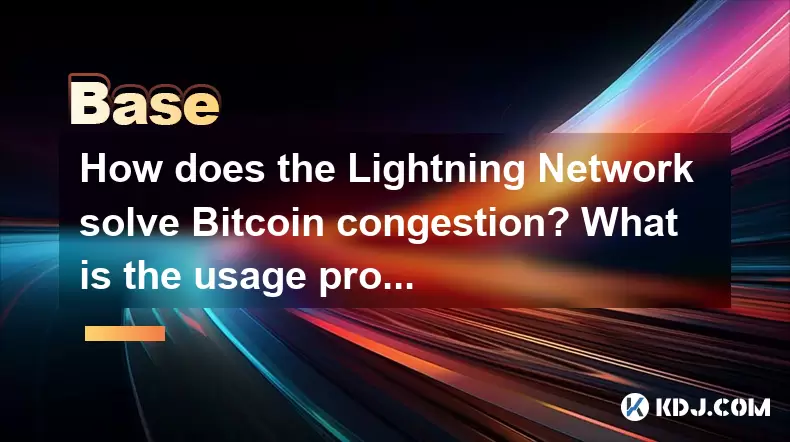
How does the Lightning Network solve Bitcoin congestion? What is the usage process?
Jun 23,2025 at 06:21pm
Understanding Bitcoin Network CongestionBitcoin, as a decentralized digital currency, operates on a blockchain that records every transaction in a public ledger. Each block has a limited size, typically 1 megabyte, which allows for only a certain number of transactions per second (TPS). When the number of transactions increases, the network becomes cong...

What is an oracle in blockchain? How to ensure data authenticity?
Jun 19,2025 at 08:49pm
Understanding the Role of an Oracle in BlockchainIn the context of blockchain technology, an oracle serves as a bridge between the blockchain and external data sources. While blockchains are inherently secure and decentralized, they cannot access real-world information on their own. Oracles enable smart contracts to interact with off-chain data such as ...

What are ICOs and IDOs in cryptocurrency? How to identify high-quality projects?
Jun 22,2025 at 11:49am
Understanding ICOs in CryptocurrencyInitial Coin Offerings (ICOs) are fundraising mechanisms used by cryptocurrency startups to raise capital for their projects. In an ICO, a company creates and sells its own tokens to investors in exchange for established cryptocurrencies like Bitcoin or Ethereum. The process typically involves the release of a whitepa...

What is the core concept of Web3.0? How is it different from Web2.0?
Jun 21,2025 at 05:56pm
Decentralization as the Foundation of Web3.0The core concept of Web3.0 revolves around decentralization, which fundamentally challenges the centralized architecture of Web2.0. In Web3.0, control and ownership are distributed across a network rather than being held by a central authority or corporation. This is achieved primarily through blockchain techn...

What is blockchain gaming (GameFi)? How to make money while playing?
Jun 20,2025 at 07:56am
Understanding Blockchain Gaming (GameFi)Blockchain gaming, often referred to as GameFi, is a fusion of blockchain technology and video games. It enables players to own in-game assets through non-fungible tokens (NFTs) and earn rewards via cryptocurrencies or token-based systems. Unlike traditional games where items are controlled by centralized develope...

What is staking in cryptocurrency? What are the benefits and risks?
Jun 22,2025 at 10:01am
Understanding the Concept of Staking in CryptocurrencyStaking in cryptocurrency refers to the process of actively participating in transaction validation on a blockchain network that uses a Proof-of-Stake (PoS) consensus mechanism. Instead of miners competing to solve complex mathematical puzzles as in Proof-of-Work systems like Bitcoin, PoS blockchains...

How does the Lightning Network solve Bitcoin congestion? What is the usage process?
Jun 23,2025 at 06:21pm
Understanding Bitcoin Network CongestionBitcoin, as a decentralized digital currency, operates on a blockchain that records every transaction in a public ledger. Each block has a limited size, typically 1 megabyte, which allows for only a certain number of transactions per second (TPS). When the number of transactions increases, the network becomes cong...
See all articles

























































































